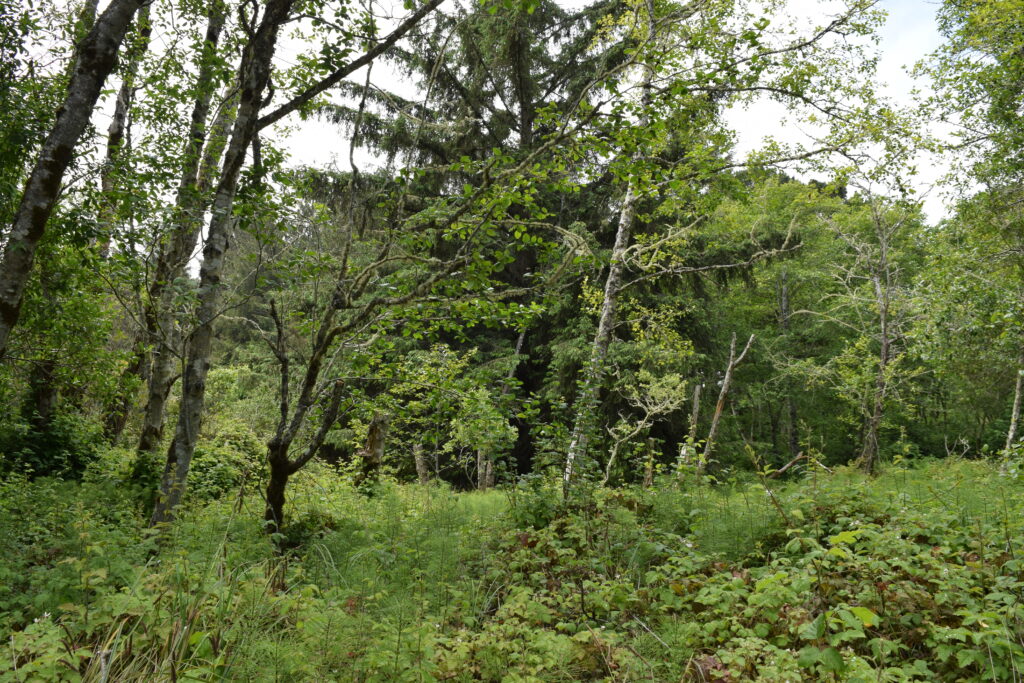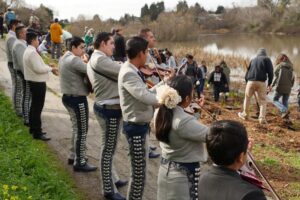Environmental Justice Communities to Receive $7.5M for Coastal Water Quality Projects
At its December 7 meeting, the California Ocean Protection Council (OPC) for the first time approved funding exclusively for coastal water quality projects that directly benefit Environmental Justice (EJ) Communities. A total of $7.5M in Proposition 1 funds will be disbursed to six projects that support multi-benefit ecosystem and watershed protection or restoration, habitat enhancement, resilience to climate change and community engagement.
While OPC regularly funds important ocean- and coast-related projects throughout the state, this is the Council’s first time soliciting projects that provide direct benefits to state-defined disadvantaged and severely disadvantaged communities, California Native American tribes, and communities that score above 80 percent on CalEnviroScreen results.
Secretary for the California Natural Resources Agency and OPC Chair Wade Crowfoot commended the state’s investment in the proposed community-driven projects, saying, “This effort is a really powerful model for how the state can prioritize funding that more effectively advances both natural resources protection and environmental justice.”
OPC Wetlands Program Manager Maria Rodriguez agreed. “This is OPC’s first step in accomplishing a dedicated pathway for funding EJ communities and projects that put community benefits at the forefront and emphasize social and economic benefits,” she said. “These are elements that OPC is working to incorporate into other funding opportunities to ensure community benefits are meaningful, direct and can be delivered through projects or programs OPC is leading.”
Funded projects span California’s coastline
North Coast – $1M to the State Coastal Conservancy for construction of restoration components at Redwood National and State Parks Visitor Center and Lower Prairie Creek, located north of the town of Orick. The project will restore critical salmon habitat, provide economic opportunity for Orick residents and ultimately establish the footprint of a future Yurok village site, where Yurok tribal members will regain access to ancestral lands.
North Coast – $1.2M to the Humboldt State University Sponsored Programs Foundation, working in close partnership with the Wiyot Tribe, enabling the Tribe to acquire a 48-acre coastal property in an area called Mouralherwaqh on Wigi (Humboldt Bay) for ecocultural restoration, water quality protection and conservation purposes. Mouralherwaqh is a culturally important site within the Wiyot ancestral territory; acquisition will allow the Tribe to increase its land holdings by 10 percent, fulfilling a key goal of the Tribe to restore and regain ownership of ancestral lands.

A red alder grove on Mouralherwaqh, Wiyot land.
North Central Coast – $804,000 to the Marin Audubon Society for the Tiscornia Marsh Restoration and Sea-Level Rise Adaptation Project, which is needed to halt the rapid loss of tidal marsh from ongoing erosion, to help reduce the coastal flood risk for San Rafael’s Canal Community, allowing Canal residents and businesses to continue living and/or working in the community. The project will also protect endangered species including the Ridgway’s rail and salt marsh harvest mouse.
Central Coast – $1.1M to the City of Watsonville for a multi-benefit ecosystem and watershed restoration project that improves water quality, native habitat and regional resilience to climate change at Middle Struve Slough. Partners Watsonville Wetlands Watch will oversee restoration activities, the community engagement plan, and provide extensive environmental education programming for Watsonville youth; Regeneracion Pajaro Valley Climate Action will support public outreach, education and community engagement; and the Community Action Board of Santa Cruz County’s Watsonville Works Program will help with environmental cleanup. Additionally, Amah Mutsun Land Trust and Pajaro Valley Ohlone Indian Council, two active local Native American groups will support implementation, community engagement and education.

A mariachi band performs alongside Middle Struve Slough. The City of Watsonville will receive $1.1M to for a multi-benefit ecosystem and watershed restoration project that improves water quality, native habitat and regional resilience to climate change.
South Coast – $2.2M to TreePeople for the Wilmington Middle School and Community Green Infrastructure Project. Wilmington is one of the most polluted communities in the state with refineries, diesel trucks, and industry. This project serves as a model for multi-benefit greening of schools in CEEJs by reducing water pollution and extreme heat impacts, improving personal wellbeing and student performance, and installing bioswales and rain gardens at Wilmington Middle School to reduce runoff volumes and pollutants entering the Dominguez Channel and Los Angeles Harbor.
South Coast – $957,000 to City of National City for wetland expansion, creation of a park/educational picnic area, installation of trash control devices, interpretive signage and sidewalk improvements immediately adjacent to Paradise Creek, an estuarine, tidally-influenced wetland adjacent to San Diego Bay and currently listed as an Impaired Water Segment under the Clean Water Act. Additionally, this project will help reduce flooding in the public right-of-way that provides access to vital community spaces in the area.
Background
After releasing a request for projects in March, OPC received over 40 applications totaling more than seven times the amount of funding available. Seventeen applicants were invited back to submit full proposals, then OPC staff evaluated and scored proposals through a competitive process, ultimately recommending the above six projects for consideration of award funding at the December 2021 Council meeting.
Read more about Prop 1, the Water Quality, Supply, and Infrastructure Improvement Act of 2014, here.

